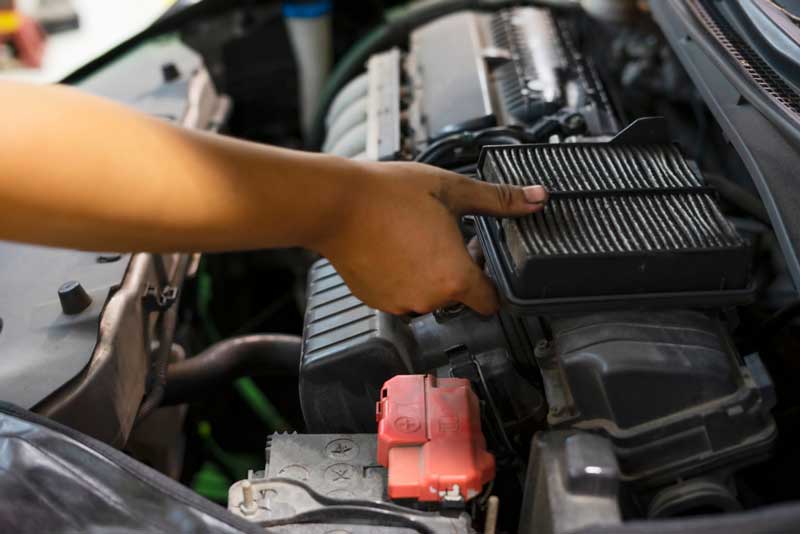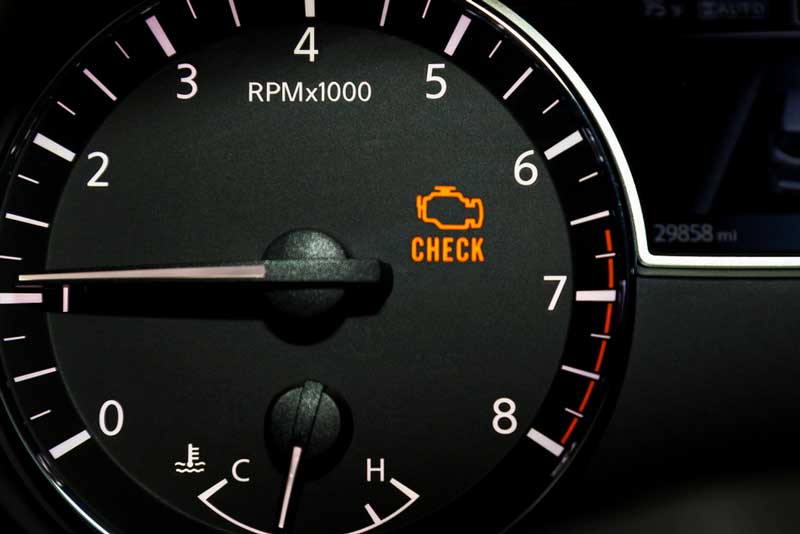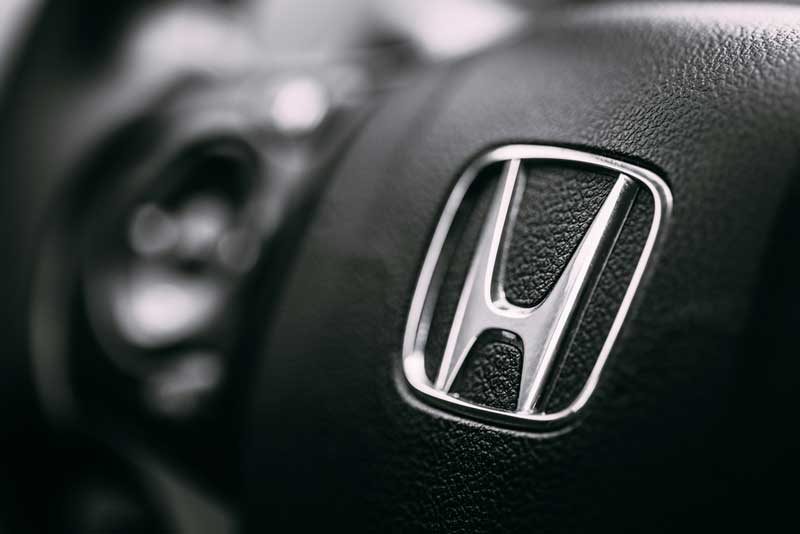Are you driving and noticed the “Emissions System Problem” message come on your dashboard and your engine light beaming? What does it mean when there is a Honda emission system issue on the Honda Pilot?
You may feel troubled by this development but be assured that there is a solution here.
In a Honda Pilot Vehicle, the Emissions System Problem message on the dashboard is common and shows an issue with the blend of air to fuel, in your engine. It can be simply repaired by replacing the fuel injectors. That warning message normally appears at 40,000 to 60,000 miles, sometimes it comes earlier.
In this article, we will discuss the Honda emissions system, what Honda Emissions System Problem means and how to fix the emissions system issue in a vehicle.
Let us find out more.
What Does the Emissions System Problem Message Mean on a Honda?
The emission system’s warning light shows an issue with the air-to-fuel blend in your engine. For Honda Pilot, its fuel injectors usually become bad at 40,000 to 60,000 miles. The oxygen sensor close to your catalytic converter might need to be replaced.
What Are the Reason For an Emissions System Problem Message?
So many things can make a Honda Pilot’s emission system malfunction, and they include:
1. Oxygen Sensor is Faulty
It monitors the oxygen level in a car’s exhaust gas. When it is not functioning well, it can increase the harmful pollutants emission.
2. There Is Leakage in the Exhaust System
This gives room for gases that causes harm to enter a car’s cabin, and endanger the life of passengers. Also, the engine will run inefficiently, and emissions will be increased.
3. Bad Catalytic Converter
This turns harmful exhaust gases into harmless or less harmful ones. Therefore, when it malfunctions, there will be an emission increase.
4. Dirty or Clogged Air Filter
When the air filter is clogged or dirty, airflow into the engine will be restricted further, resulting in emission increase and inefficiency.

5. Bad Fuel Injector
It can lead to the engine running lean, and an emission increase.
How Do You Fix Emission System Problems on a Honda?
1. Inspect the Air Filter on your Air Cleaner System.
The system takes air from the vehicle’s outer part, filters it, and then takes it to the engine. An air filter that is dirty or clogged causes numerous issues, including the Emissions System Problem.
2. Check the Positive Crankcase Ventilation.
PCV, or Positive Crankcase Ventilation, helps in routing gases unburned from your engine to your combustion chamber. The gases escape from your dipstick tube when it is not happening.
To examine this occurrence, take away the cap of your oil fill, then turn on the engine. When smoke emits from underneath the hood, there is a possibility that the PCV is malfunctioning.
Also Read: Muffler Delete and Resonator Delete (Which is Better)
3. Try to Use the Evaporative Emissions Control System.
This functions by recirculating fumes from a fuel tank passing through the carbon canister. It is typical in cars with a closed fuel system and fumes vented into the atmosphere. You may see the check engine light when your car owns the system and starts malfunctioning.
4. Check your Exhaust Gas Recirculation System.
This system helps recirculate the exhaust gases, to return to the engine and burn again. Unfortunately, when there is an issue with your exhaust gas recirculation system, this can make the Pilot emit so much pollution.
To check the Exhaust Gas Recirculation System, turn the engine for some minutes. Then, switch on the A/C as you place your hand above the tailpipe end. If you feel a forceful suction emitting from there, it shows that your EGR system has an issue and is to be repaired.
5. Check your Air Injection System.
This works by inserting a small amount of air into your exhaust stream, which aids in reducing emissions and completing a combustion process. If it fails to function effectively, it can make your OBD-II system begin to throw the P0420 code.
The steps are:
- Find the pump of your air injector
- Examine to find leaks in your fittings or hoses
- Ensure that you power the pump
- Check the solenoid valves and check valves.
- In the passages of air injection, examine for blockages.
What is the Extent of Honda’s Emissions Warranty?
In 2020, in November, Honda released the TBS or Technical Service Bulletin, informing their dealerships of the issue, communicating ways of identifying and fixing it, as well as the extension of warranty to a period of 10 years, counting from the day the purchase was made or one hundred and fifty thousand miles.
Is Driving With an Emissions System Problem Message on the Dashboard Safe?
This depends on the length of time the message appeared on the dashboard. If you are just getting the message, and nothing different happens while driving the vehicle, you can continue driving for a few more days till you take it to the mechanic.
Although, this is not recommended except if you need the veg urgently. As we discussed, driving as the warning message is ON, can extend the damage to your catalytic converter.
If you continue driving the vehicle with the reoccurring warning message, you are advised to stop driving and hand it over to your dealership(professional).
How Much Does It Cost to Fix the Emissions System Problem?
When this message appears on the Honda Pilot, your dealer, advises you to fix the car because the warranty usually covers the cost of repairs. As has been said, Honda knows of this problem, hence the warranty extension on the Honda Pilot brand.
Although, if the vehicle has covered over one hundred and fifty thousand miles, the dealer will decide not to pay the amount for repairs, and you will be left with paying by yourself.
Changing the Honda Pilot’s fuel injector will cost about $300 to $400 on average for labor and $300 for the parts. However, if you follow instructions well, you may change your fuel injectors by yourself, and save money on labor.
Are There Some Hints to Avoid Getting an Emissions System Problem?
Below are some tips you can follow, to avoid the emission control system issue:
- Ensure that the car is properly cared for: Here, we are talking about changing and checking the oil, and performing routine maintenance activities.
- Know the signs of a possible issue: If something abnormal happens, go to a professional to check your car.
- Use high-quality fuel and do not top off the tank: This will help you prevent contaminating the emission control system.
What Does Emissions System Problem Imply on a 2017 Honda?
A failing O2 sensor is a very common thing that causes issues in the emission system of the 2017 Honda Pilot.
The O₂sensor watches the exhaust gases that come out of an engine. It triggers your warning light when it notices that emissions are very high.
Some other causes are catalytic converters or fuel-air ratio sensors that are faulty. Many of these problems can be fixed with an adjustment or simple repairs. Although if the issue is not repaired, more serious issues such as engine damage might result.
What Does Emissions System Problem Mean on the 2018, 2019, and 2020 Honda Pilot?
Poor acceleration, rough idleness, stalling, and hesitance are problems with the Honda Pilot emission system. You may fail the emission test, and the check engine light also comes on. These problems have a few possible causes.
One of the causes may be that your catalytic converter has to be changed. The function of a catalytic converter is to turn harmful gases into harmless ones and release them into the atmosphere.
When it malfunctions, gas buildup will lead to the above problems.
Also, your oxygen sensor may be faulty. The function of an oxygen sensor is to measure the quantity of oxygen in your exhaust fume and send the message to your computer.
When it malfunctions, your computer will be unable to adjust that air-fuel blend well, which can cause problems to your emissions system.
Lastly, the pipes or hoses in the car’s system may have a problem. If one of the parts leaks, your engine will run lean, meaning sufficient fuel is not blended with air. This also causes problems to your emissions system.

What Is the Meaning of the Emissions System Problem on a 2021 Honda Pilot?
Issues with the catalytic converter, are very common and can make the check engine light of your Pilot turn on.
The converters change harmful emissions from your engine to less harmful ones before they go into your car’s exhaust system. If it malfunctions, there can be an increase in the number of emissions.
When you face this issue, it is best to immediately take the SUV to your mechanic, for the issue to be diagnosed and fixed.
If you keep driving with a faulty catalytic converter, other car components will be damaged, and fuel efficiency will be reduced. Most times, total engine failure may be the final result.
What Is the Meaning of the Emissions System Problem Message on a 2022 Honda Pilot?
Bad control of the fuel injector, causes a problem with the Honda Pilot’s emissions system. Your fuel injectors may have leaks or not receive the right quantity of voltage.
Such can make the engine run too rich or too lean. When the engine runs too lean, the result might be your check engine light coming on.
The rich mixture makes a catalytic converter fail and overheat. An oxygen sensor watches the quantity of oxygen in your exhaust gas and sends signs to your computer informing it of the fuel it should inject.
When your oxygen sensor malfunctions, it can make your engine run too rich or too lean.
Also Read: Car Blowing White Smoke After Oil Change (Causes & Fix)
Frequently Asked Questions – Honda Emissions System
What does the emission systems problem mean?
When the light comes on, your vehicle’s emission control system has a problem, and your car is causing air pollution beyond acceptable federal standards. A car in this condition will fail a smog check or emissions inspection. Do not mistake a service or maintenance light for a check engine light.
Can I drive with an emission problem?
Of course, so long as that is the only light that comes on. After that, there is no need to be troubled about safety.
How do you fix an emission problem?
Simply repair the issue that is causing it. For example, if there is a failing oxygen sensor, you can buy a new one and change it. Also, if the catalytic converter is faulty, you can buy another one and change it.
What does it mean when it says check emission system?
It is a sign that your OBD II or onboard diagnostics system, has found a fault in your car’s exhaust system, fuel, ignition, or emissions.
How do I fix my Honda emissions problem?
It is pretty simple to fix. You only have to change your fuel injectors, and you are good to go. Sadly, since it doesn’t fall as a recall, payments will be made for repairs. But when the Honda Pilot remains on warranty, you are covered.
How long can you drive with the emissions light on?
Based on the thing that triggered your check engine light, you can have the ability to drive for a long time or a few days or so. Covering a distance of about 50 and 100 miles allows your engine’s computer time to recalibrate some sensors that may fix the issue.
What causes emission problems in a car?
The rich fuel/air mixture usually causes an emissions test failure. This issue usually results from a faulty injector or faulty oxygen sensor. Therefore, when one’s emission fails, the components are to be examined and changed when needed. For instance, when there is a leak.
Can bad gas cause emissions problems?
A broken or loose gas cap, can increase emissions and reduce fuel efficiency. MAF sensor – Mass airflow sensors easily turn bad in cars.
What does it mean when the Honda Civic says “check emission system”?
When the air filter becomes clogged or dirty, the Honda Civic emission system Check light will illuminate. Possible ways to solve the problems, on a Honda Civics’ 2012 to 2015 emissions systems are: you either replace the filter or clean it.
Does the Honda warranty cover fuel injectors?
The American Honda extends its warranty coverage, particularly for fuel injectors, running for either 150,000 miles or ten years from the day of purchase, to anyone who comes first. Such fuel injectors might have been made as improper ones.
Conclusion – Honda Emissions System Problem
The Honda Pilot emission system issue means the car’s emissions control system has a problem. This results from many things, such as a dirty or clogged air filter, malfunctioning oxygen sensor, et cetera. When you encounter this issue, it is best to take the car to a professional mechanic, for the issue to be diagnosed and fixed. Or else you will end up causing grievous damage to the engine or even a road accident.

